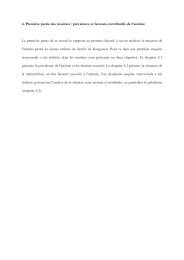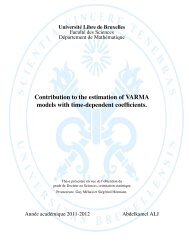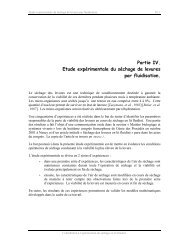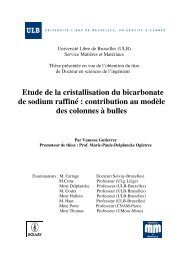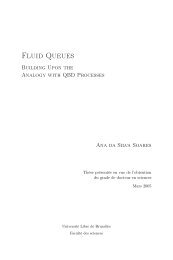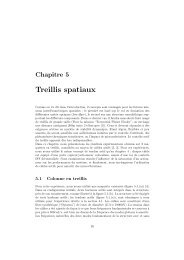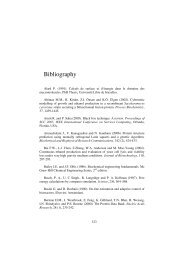Diapositive 1 - de l'Université libre de Bruxelles
Diapositive 1 - de l'Université libre de Bruxelles
Diapositive 1 - de l'Université libre de Bruxelles
You also want an ePaper? Increase the reach of your titles
YUMPU automatically turns print PDFs into web optimized ePapers that Google loves.
Chapitre IIIbrought to 25 ml with MilliQ water. These solutions were diluted 10 times beforeanalysis.Experimental samples and sorted ossicles were mineralized by adding 840 µl of MilliQwater, 100 µl HNO 3 65% (Suprapur, Merck) and 60 µl H 2 O 2 30% (pro analysi, Merck).These solutions were diluted between 5 and 10 times before analysis.Magnesium, strontium and calcium were analysed on an IRIS Advantage (Thermo JarrelAsh) Induced Coupled Plasma Atomic Emission Spectrometer (ICP-AES). Thecalibration was achieved using artificial multi-elemental solutions ma<strong>de</strong> from certifiedmono-elemental solutions (Merck) and using certified reference materials for qualitycheck : HPS CRM Seawater (High Purity Standard) for the seawater samples and JCp-1(coral) and JCt-1 (giant clam) (Standard Geological Survey of Japan) for the skeletonsamples. Results for the certified reference materials were always within ± 10% of thecertified values.Data analysesThe individual growth rate (GR) was calculated as follows: GR = (R Tf - M T0 ) / Dwith : R Tf : ray length of the individual (mm) at the end of the experiment,M T0 : median size (mm) at the beginning of the experiment,D : duration of the experiment (days).Median size per aquarium at the beginning of the experiment was used as individualjuvenile starfish cannot be tagged.The relationships between Mg/Ca and Sr/Ca ratios and salinity, temperature and growthrate were investigated using forward stepwise multiple linear regressions. The regressionequations between elemental ratios and size in field samples were established by simplelinear regression. The comparison of Mg/Ca and Sr/Ca ratios in the different skeletalplates was achieved by repeated measures analysis of variance mo<strong>de</strong>l III (sensu Zar 1999)followed by mo<strong>de</strong>l III Tuckey’s test.All statistical analyses were performed using the Systat 9 © software. The significancelevel was set at α = 0.05.RESULTSField SpecimensThe Mg/Ca and Sr/Ca ratios were measured in the different types of ossicles forming thewhole skeleton (adambulacral plates, adambulacral spines, ambulacral plates, aboralplates, upper marginal plates) (Figure 22). Significant but weak differences were recor<strong>de</strong>d66



